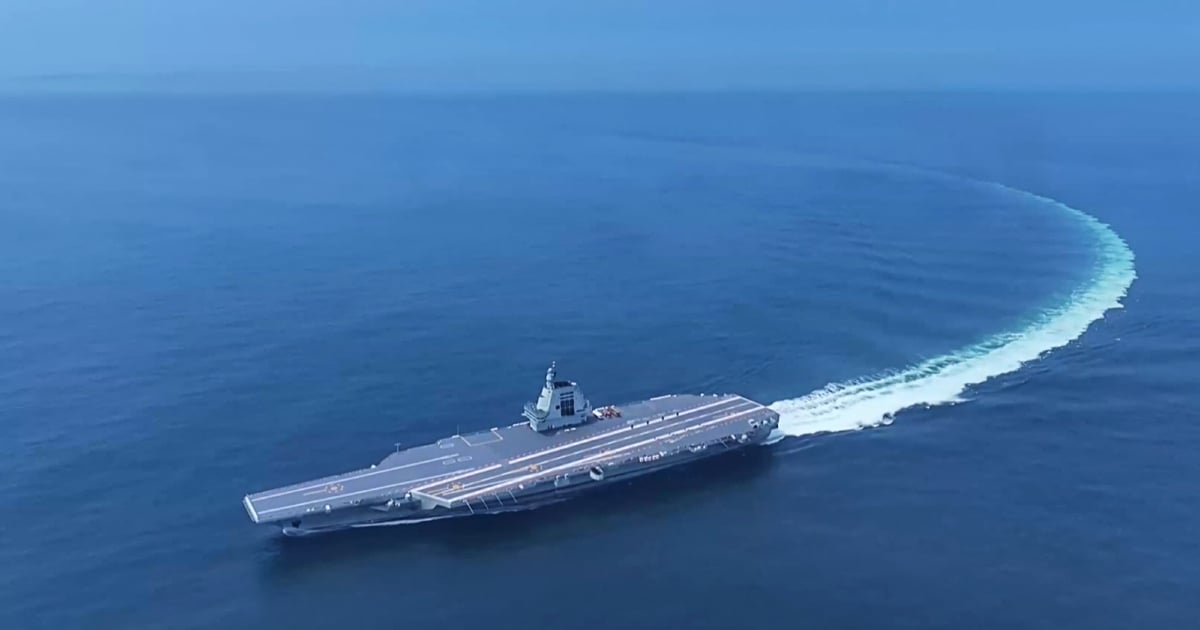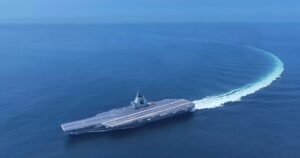BEIJING: China‘s third aircraft carrier entered service this week, state media said on Friday, marking a key milestone in President Xi Jinping’s drive to modernise the military.
The Fujian joins China‘s fleet as Beijing projects its maritime power against the US and others in the region, with flashpoints including territorial disputes in the South China Sea and persisting claims over Taiwan.
The latest aircraft carrier is equipped with an electromagnetic aircraft launch system (EMALS) – something that previously only the USS Gerald R. Ford possessed.
The advanced take-off system allows the Chinese air force to deploy jets carrying larger payloads and more fuel.
State news agency Xinhua said on Friday that Xi had “personally decided” that the Fujian – which shares the name of the province facing Taiwan – would adopt an EMALS system.
Beijing does not rule out using force to seize Taiwan, a democratic, self-ruled island that China claims as part of its territory.
Analysts say China lags behind the US, which has 11 aircraft carriers in service, in overall military prowess.
But Beijing has directed billions of US dollars into defence in recent years, a trend that has unnerved some governments in East Asia despite China insisting its aims are peaceful.
The navy in particular has seen a massive expansion as leaders seek to grow China’s reach in the Pacific and challenge a US-led alliance.
‘GRAND AND ENTHUSIASTIC’
The new carrier’s official commissioning took place at a naval port in China’s southern island province of Hainan on Wednesday, Xinhua reported, describing the atmosphere as “grand and enthusiastic.”
“After the ceremony, Xi Jinping boarded the Fujian… and learned about the development of the aircraft carrier system combat capabilities and the construction and application of the electromagnetic catapult system,” it said.
Xi also went into the carrier’s control tower to learn about flight operations, Xinhua said, adding that he “solemnly signed the ship’s logbook.”
[[nid:1310567]]
After conducting sea trials in recent months, the Fujian now joins China’s other two carriers in active operation, the Liaoning and the Shandong.
The Soviet-built Liaoning is the oldest, commissioned in 2012, while the Shandong entered service in 2019.
China’s third carrier is “by many measures more capable than the Liaoning and the Shandong,” Collin Koh, an expert in regional naval affairs at Nanyang Technological University, told AFP.
“Overall, compared to the two preceding carriers which are ski-jump configured, the Fujian has greater combat persistence and striking power,” said Koh.
The Fujian had already been in the spotlight several times leading up to its formal commissioning.
Chinese defence officials confirmed in September that the Fujian had sailed through the sensitive Taiwan Strait to carry out “scientific research trials and training missions” in the South China Sea.
Analysts say the transit was likely intended to send a strong signal to potential adversaries.
Defence ministries in Japan and Taiwan said at the time that they had detected the Fujian’s movements, which brought it within approximately 200 kilometres (125 miles) of the disputed Senkaku Islands, known in Chinese as the Diaoyu Islands.
China also released videos in September of aircraft take-offs and landings aboard the Fujian, including with its fifth-generation J-35 stealth fighter.
State media hailed it as a “new breakthrough” in the development of Chinese carriers and a “major milestone” in the modernisation of the navy.
© New Straits Times Press (M) Bhd






